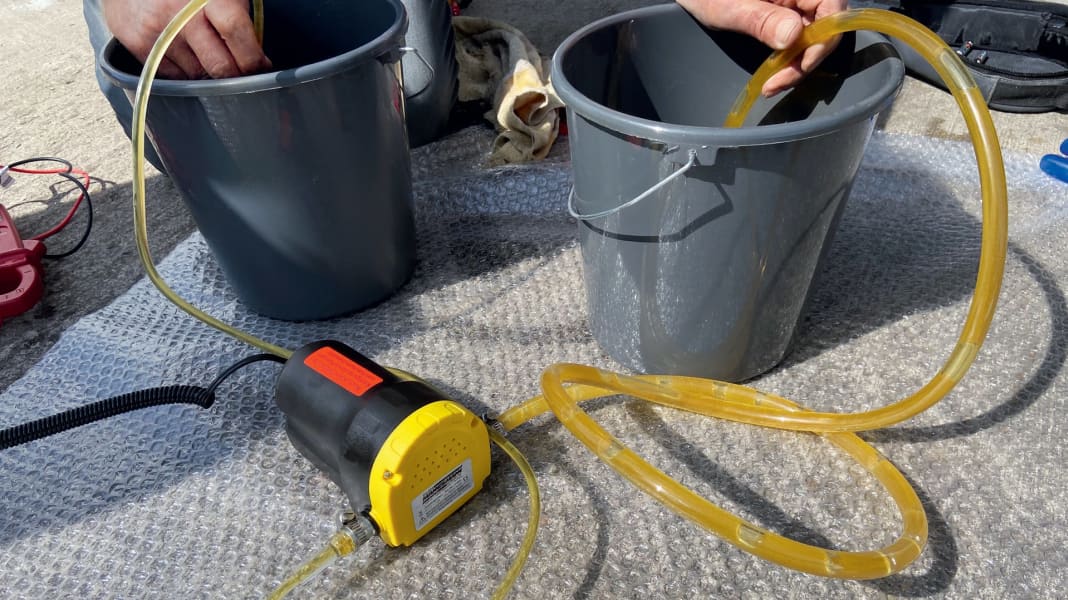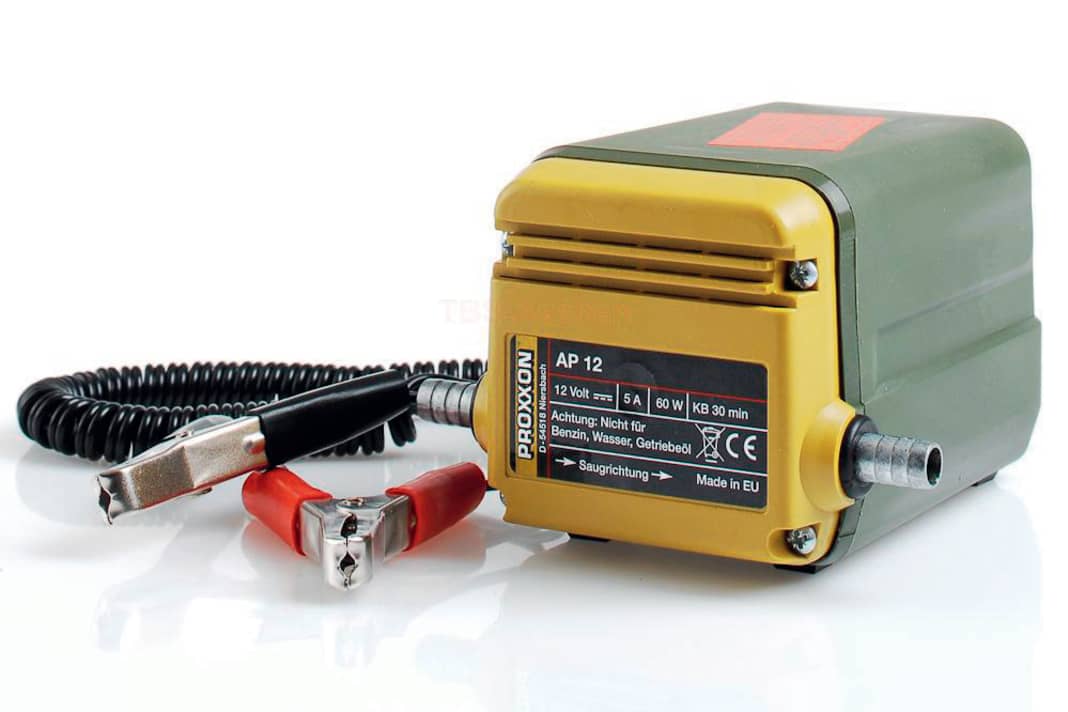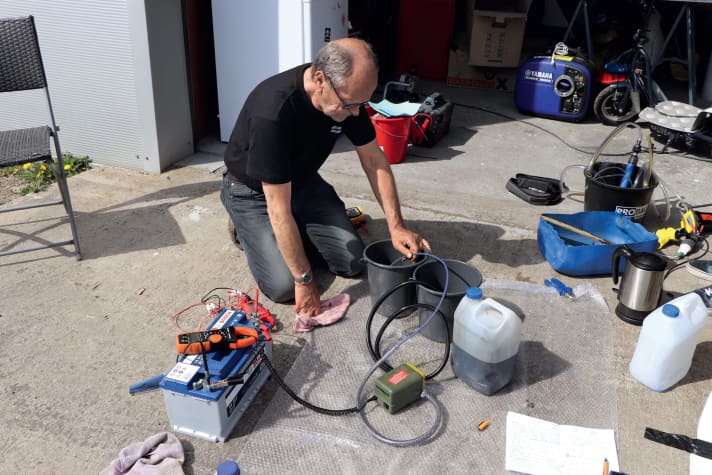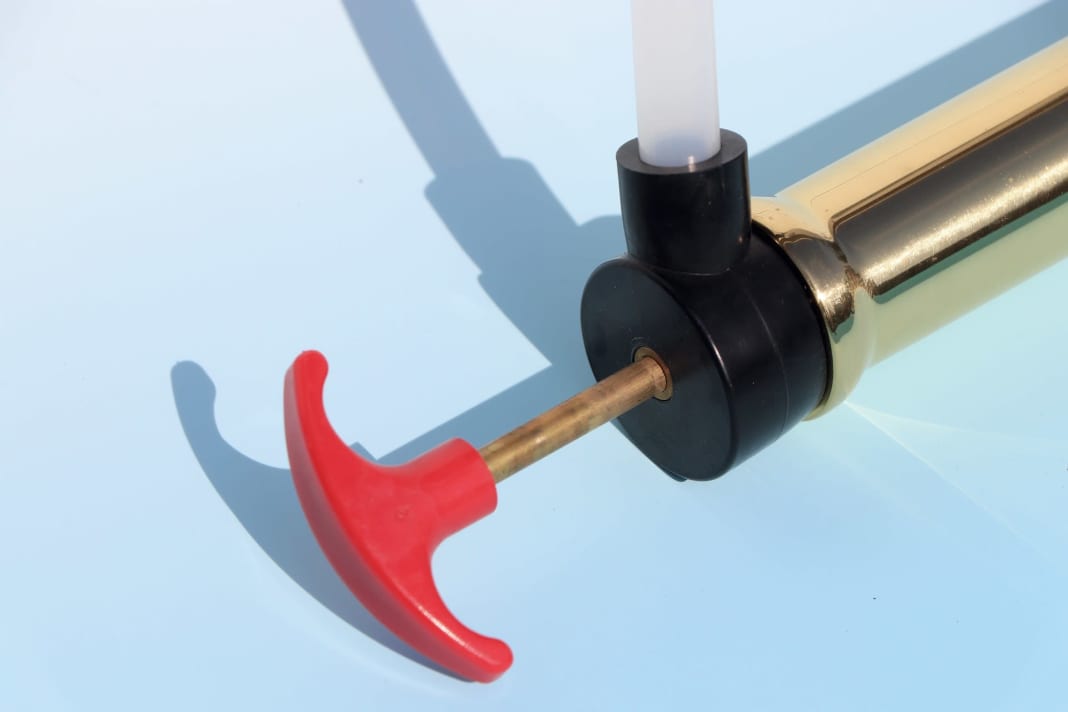
This article is part of the special season start. All parts:
- Cast off - how to get the new season off to a smooth start
- Checklist: Fit for the new season - the checklist
- Cleaning, polishing and care
- The best care and cleaning products for boats
- TLast-minute tips from the experts at Pantaenius for the start of spring
- Checklist for the boat trailer
- The best tips from the Pantaenius specialist
- Changing the oil in a boat engine - here's how!
- Special pumps - changing oil in no time at all
- To check the cooling circuit
- How to renew the antifouling
- Boat equipment - the more, the better
Regardless of whether the engine ran a lot or a little last season, it is due at least once a year: the oil change. A tiresome duty. After all, the engine on a boat is rarely as easily accessible as on a car, where all you often have to do is place a pan underneath and unscrew the oil drain plug.
Because there is no access from below, the engine oil is instead extracted from above in boat engines. This is done through the dipstick opening, which conceals a channel that leads down into the oil pan. There are three main types of oil suction pumps on the market: simple hand pumps, electric pumps and vacuum pumps. We tested five commercially available models to find out their strengths and weaknesses.
We have tested these pumps:
- Pela PL 6000
- Brass hand pump
- Mannesmann electric pump
- Proxxon AP 12
- Lindemann oil pump
Advantages and disadvantages of the tested pumps
The wheat is separated from the chaff as soon as the hose is inserted. To ensure that it can be threaded down into the oil pan without snagging or bending, the hose should be rigid but flexible enough to follow slight bends. Thin enough to be pushed through the engine with some play, but thick enough to be able to convey particles and impurities.
Only the Pela PL 6000 vacuum pump has such a rigid hose, which also has a good internal diameter. In principle, it is a flexible steel tube that is encased in rubber. When the hose is pushed in, it reaches the bottom of the oil pan. You can even hear it make a "thump" sound. In contrast, pure PVC hoses tend to bend. Especially if they have been stored rolled up and have therefore taken on a bent shape. After passing through the dipstick channel, they do not reach the bottom of the sump, leaving a residual amount of used oil in the engine.
The vacuum pump also does not require a canister, but has its own six-litre collection container. It makes a well thought-out impression as soon as it is unpacked: thick plastic, the sturdy hose, plus extras such as the pouring spout and the sealing cap. A hand pump is used to create a vacuum, which evacuates the oil from the tray. Once the oil is flowing, the pump continues to suck it out through the siphon effect until the oil pan is empty. So in theory. Obviously, the pump has to be positioned below the engine, which is not possible on boats. In any case, we had to pump a total of six times during the test in order to maintain the low suction power.






The two hand pumps are very similar in design, but have completely different results with each piston stroke due to the different suction volume. The Lindemann pump cuts a pretty good figure in the test despite its very simple appearance made of blue plastic.
At first glance, the two electric pumps could be siblings with different housings. Even when reading the technical specifications - both may only run for a maximum of 30 minutes at a time and must then cool down - the impression arises that both devices have the same core. But contrary to expectations, the Mannesmann pump completely outperforms the Proxxon in terms of pumping performance in the test.

Measurement setup
Of course, you should always warm up the engine before changing the oil so that the oil is less viscous. In practice, however, this is not always possible, for example when the boat is still on land. Oil pumps can also be helpful when topping up fresh oil if the filler neck is difficult to access. In order to cover all areas of use for the pumps, we kept three types of oil in stock for the test: fresh, cold oil, cold used oil and warm used oil.
The two cold oils had a temperature of 12.5 degrees Celsius, which should be realistic when working in spring. The warm oil was given a temperature of 50 degrees Celsius, which is reached in many engines after a short warm-up phase of around 15 minutes.

Not all pumps scored well in all categories. With the Pela PL 6000, the pumping direction cannot be reversed, making it unsuitable for filling. With the brass hand pump, pumping cold oil - whether fresh or old - is simply impractical because it takes too long and is too laborious. With the large hand pump and the two electric pumps, it is worth replacing the small 6 mm hose with a 10 mm hose for filling. Of course, this is not possible when pumping used oil, as the thick hose does not fit into the opening. With the thin hose and a test quantity of two litres, pumping takes a correspondingly long time. The Mannesmann pump (just under eight minutes) is far ahead of the Proxxon (almost 21 minutes).
All pumps perform well with warm oil, except for the vacuum pump. With a duration of over 13 minutes, it is in principle only suitable for small engines or generators. For large engines, the electric pumps are ahead, also in terms of endurance. With the prescribed rest periods, they manage 15.3 litres (Mannesmann) or 8.7 litres (Proxxon) per run.






The electric Mannesmann pump is therefore recommended for large engines. The hand pump from Lindemann is also practical if the oil volume remains under ten litres - because nobody can stand pumping by hand for longer than that.
In some of our websites we use so-called affiliate links. These are marked with an asterisk (*). If you click on such an affiliate link and make a purchase via this link, we receive a commission from the online shop or provider concerned. This does not change the price for you.
This article is part of the special season start. All parts:
- Cast off - how to get the new season off to a smooth start
- Checklist: Fit for the new season - the checklist
- Cleaning, polishing and care
- The best care and cleaning products for boats
- Last-minute tips from the experts at Pantaenius for the start of spring
- Checklist for the boat trailer
- The best tips from the Pantaenius specialist
- Changing the oil in a boat engine - here's how!
- Special pumps - changing oil in no time at all
- To check the cooling circuit
- How to renew the antifouling
- Boat equipment - the more, the better

